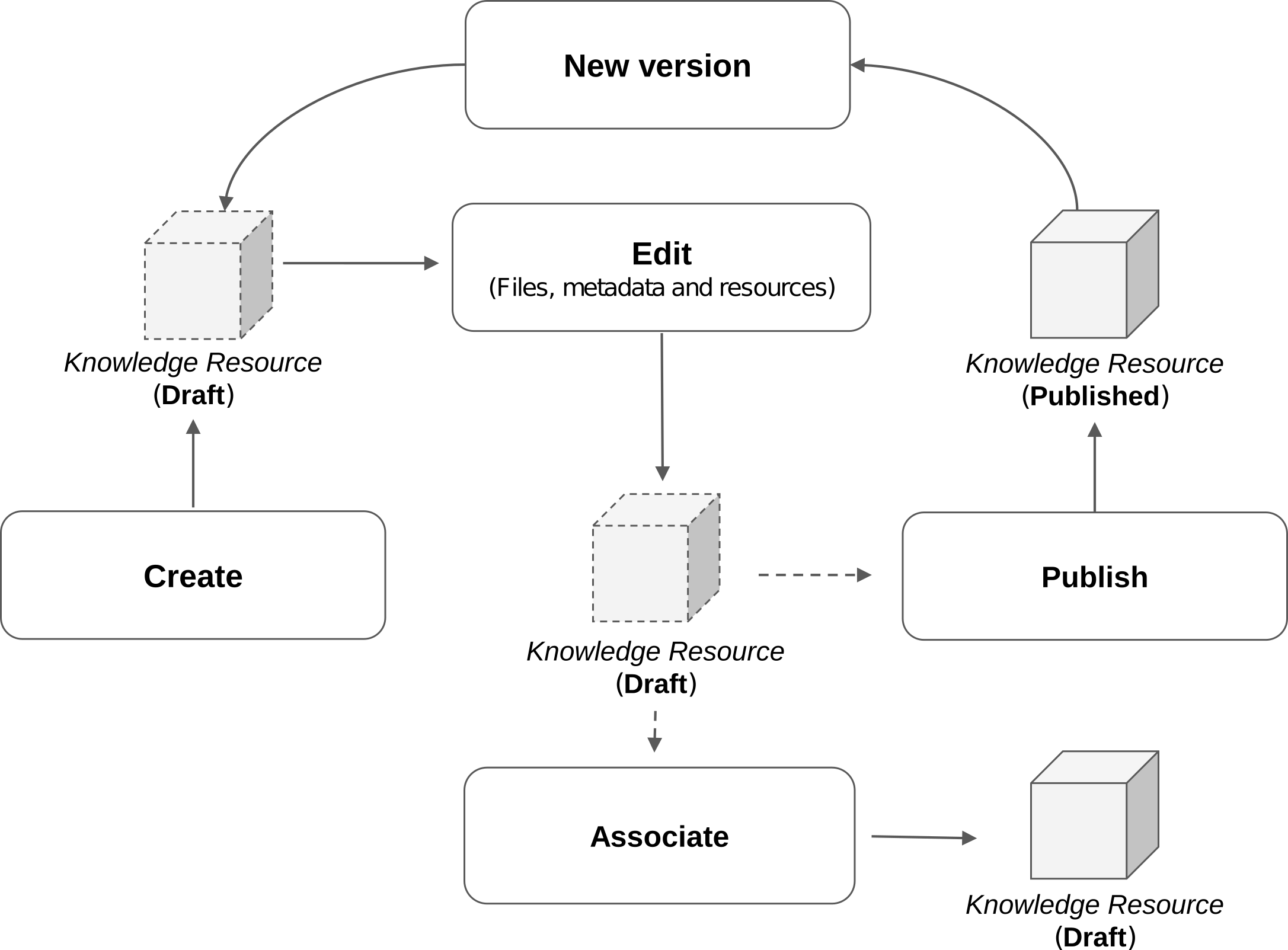Knowledge Resource
As mentioned earlier, experts and researchers use and create different materials for an Earth Observation application to be developed. Some examples of these materials are presented below:
Earth Observation datasets: To get answers about a specific phenomenon or even to monitor a particular behavior from the planet, some applications require Earth Observation data as the basis for all further actions;
Source code and tools: Specialists, when developing an application, can create processing scripts (e.g., R, Python, and Julia) or even use another kind of tools (e.g., GDAL and QGIS) to extract information from Earth Observation Datasets.
Computational environment: To apply processing scripts or other tools, specialists configure their environment (Computer and operational system). The configurations and software installed in this environment can be shared;
In the GEO Knowledge Hub, to enable users to organize and manage these parts from an application, is defined the concept of the Knowledge Resource (or Resource). Using this concepts, users can upload each part of an application to the digital library, defining metadata and files for them. While defining a Resource, users can create and associate to it a DOI.
In addition to these properties, to allow the user to use the GEO Knowledge Hub while he/she is building his application, a Knowledge Resource can be versioned. Thus, several versions can be defined for the same Resource, which can vary the contents independently so that modifications in one version do not affect other versions.
Life cycle
The creation, management, and use of a Knowledge Resource are done through a life cycle. In this, all possible operations to a Package are defined, which includes the create, edit, version, and publish operations. The relationship of each of these operations and the transformations they make to a Resource are presented in the figure below:

As you can see, the life cycle has four main operations, these are:
Create: The user can create a new Resource;Edit: The user can edit an existing Resource;Publish: After editing, the user can publish the Resource;New version: The user can create a new version of a published Resource;Associate: The user can associate the Resource with a Knowledge Package. When associated, a Resource can only be published via Package.
In addition to these operations, you can also see in the figure that each of them is associated with a state. This is because, in the life cycle, a Knowledge Resource can be in two different states:
Draft: Being in draft mode, the Knowledge Resource can be edited. This editing includes themetadata, and thedata files;Published: When published, elements go into thePublishedstate. In this state, the Knowledge Resource can no longer be modified. In this state, only metadata can be changed.